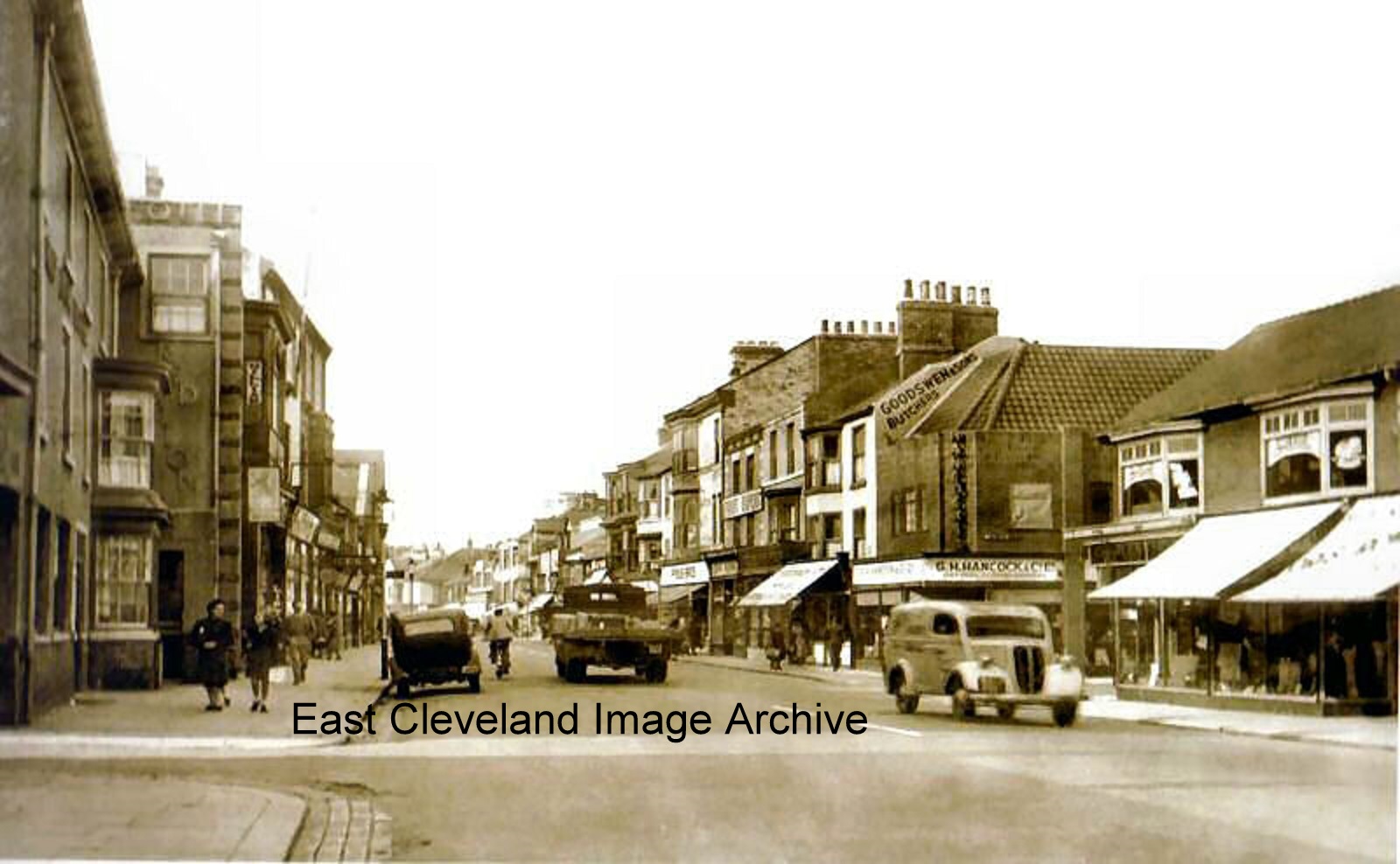
Easy to see that this is Redcar but what date do you think about early 1950’s?
Image courtesy of Mike Holliday.
|
|
||
 Easy to see that this is Redcar but what date do you think about early 1950’s? Image courtesy of Mike Holliday. 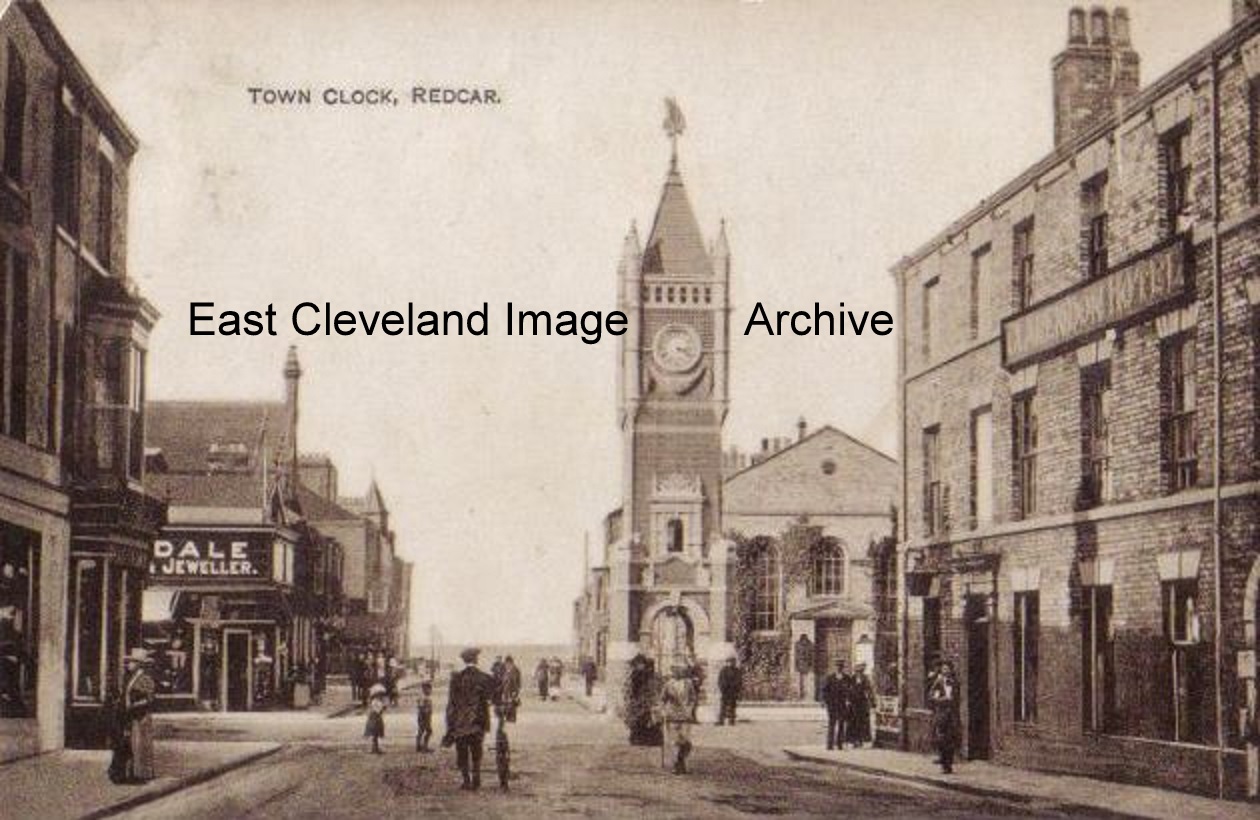 Yes once again it’s Redcar and a lovely early photograph of the clock. Image courtesy of Mike Holliday. 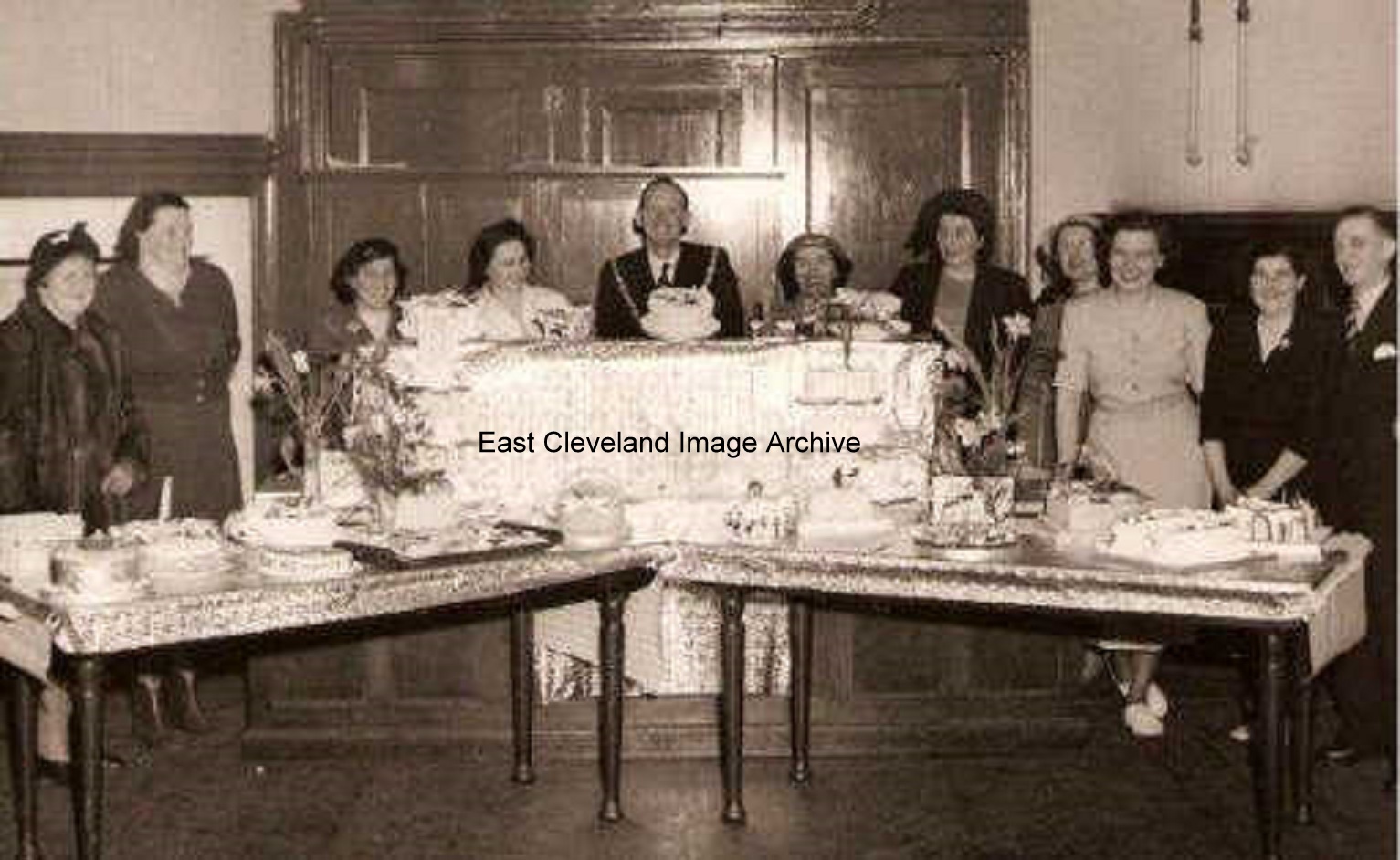 This is a photograph of a decorated cake competition in 1952. Chairman and Mrs. Woodrow are in the picture, but do you recognise anyone else? Image courtesy of Carole Kellogg 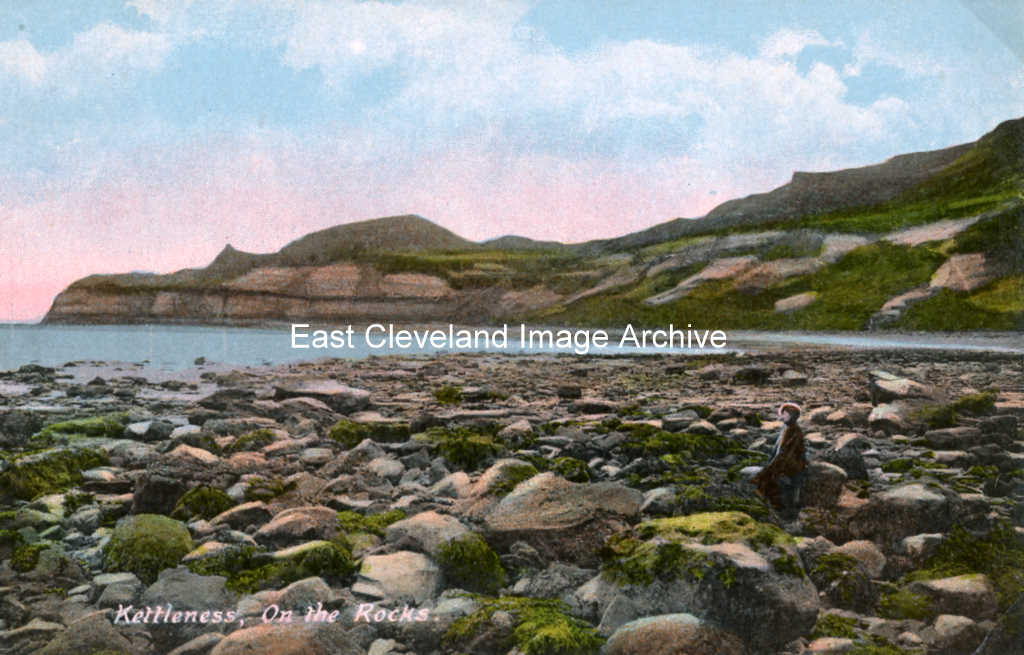 Low tide in Runswick Bay, looking eastwards, beyond Claymoor Beck, with the headland of Kettle Ness in the background; the cliffs and headland have been shaped by the alum quarries. Image courtesy of Beryl Morris (from a Tom Watson postcard). 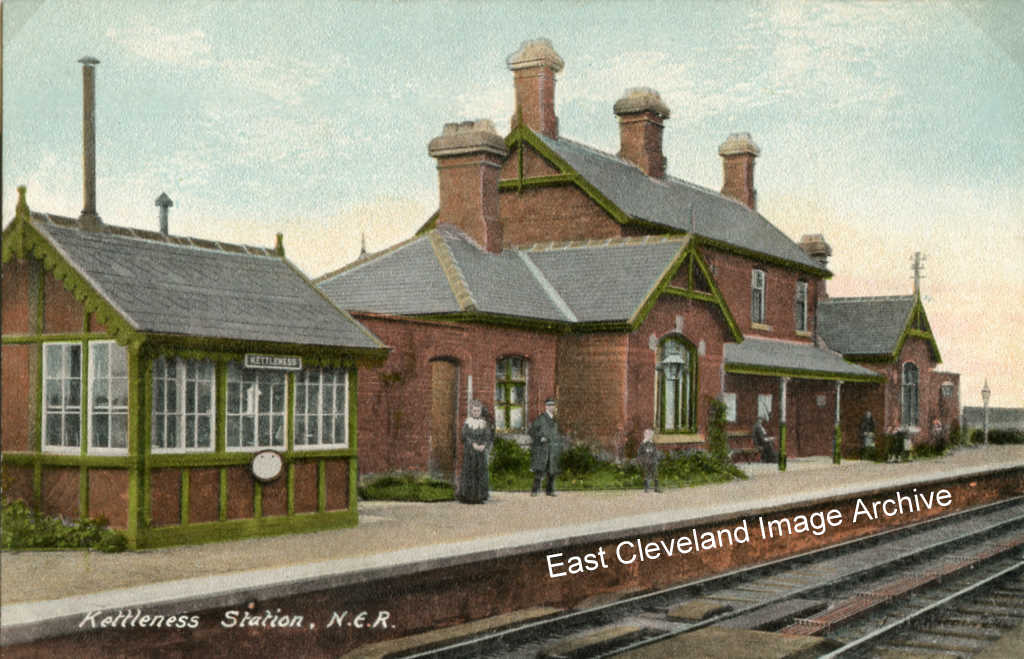 Kettleness Station, as it was early last century. It dates back to the 1880s, was intended principally for tourists and visitors, and had passing loops with two platforms so that passenger trains could pass here. The line closed in 1958. The building and grounds are a Scout Activity Centre, leased from the Marquis of Normanby, and opened in 1964. Image (from a Tom Watson postcard) courtesy of Beryl Morris. 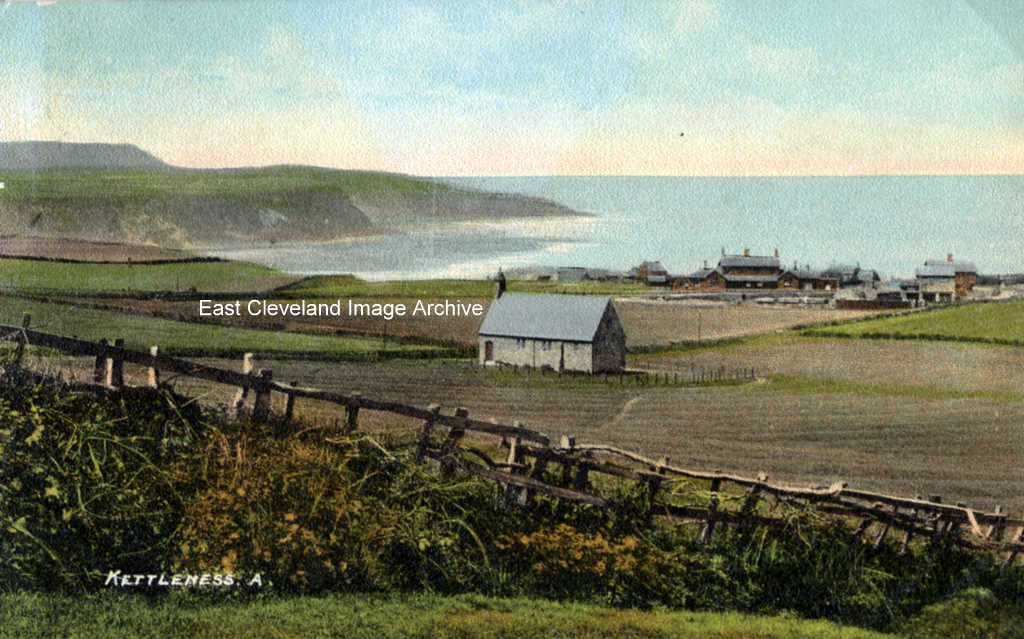 On 17th December, 1829, the village and alum works were destroyed by subsidence of the cliff after torrential rain. The villagers were rescued and taken aboard an alum ship, ’Little Henry’, that was anchored in the bay. The alum works resumed production two years later. This view, dating from the early 1900s from a postcard by Tom Watson, is taken from the footpath at Scratch Alley and looks north east, over the old chapel (originally the mission church of St John the Baptist, built in 1872) and railway station. Image courtesy of Beryl Morris for the image. 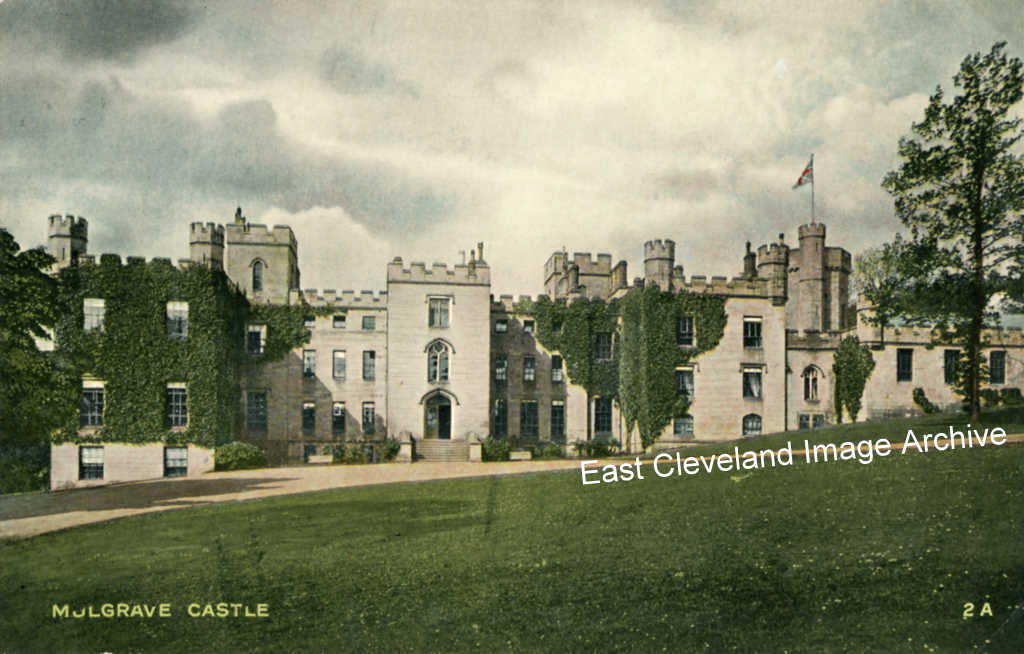 Mulgrave Castle is a large country house, home to the Marquis of Normanby. The core of the building was built before 1753 and two wings were added in the 1780s. It was completed between 1805 and 1816 with the addition of towers, turrets and further battlements and a projecting entrance hall. The gardens are occasionally opened for charity. Michael Grey tells us: ”My grandparents, Thomas William Brownbridge (Handyman) and Ruby Mona Richmond (Domestic) were in service at the New Castle during the late 1930′s to 1940′s.” We have had a request from Valerie Ramsay: ”I am trying to find out information about Daisy May Jackson and Fredrick William Garbut who were in service at Mulgrave Castle from 1914 to 1922. As I am trying to put some thing together for my Mum.” Please contact the ECIA if anyone can assist with this research. Image (from a postcard dating from c.1905) courtesy of Beryl Morris; information from ’Inside the North York Moors’ by Harry Mead, thanks to Michael Grey and Valerie Ramsay for the updates. 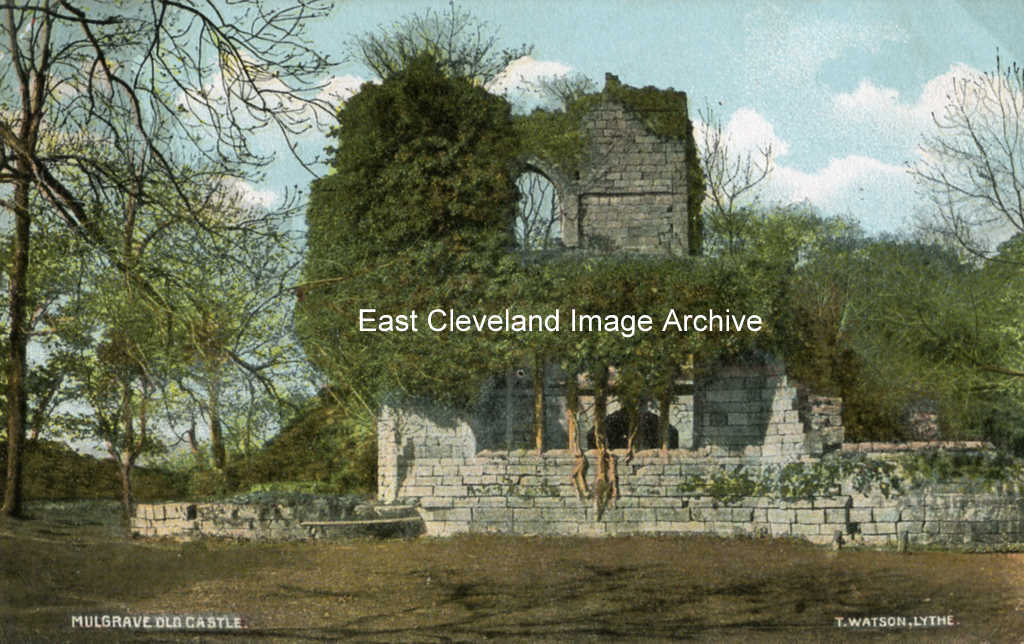 The old castle of Mulgrave was constructed early in the 13th century, was besieged in the Civil War and dismantled by order of Parliament in the 1600s. It can be reached through the woods, via a footpath from Sandsend which is open at weekends and on Wednesdays, except in May. This view from a Tom Watson (of Lythe) postcard. Image courtesy of Beryl Morris.
Skinningrove Senior School football team of 1956/57 are pictured outside the school. Back row: Mr Snowdon (Headmaster), Stuart Brown, Fred Chapman, Michael Hallams, Stan Myers, Keith Peggs, Cyril Libbey, Mr Robson (Games master). Front row: Geoff Rispin, Barry Auckland, Albert Breckon, Colin Cooke, Ron Cook, Raymond Caley, Alan Sayers. Image and names courtesy of Barry Auckland. 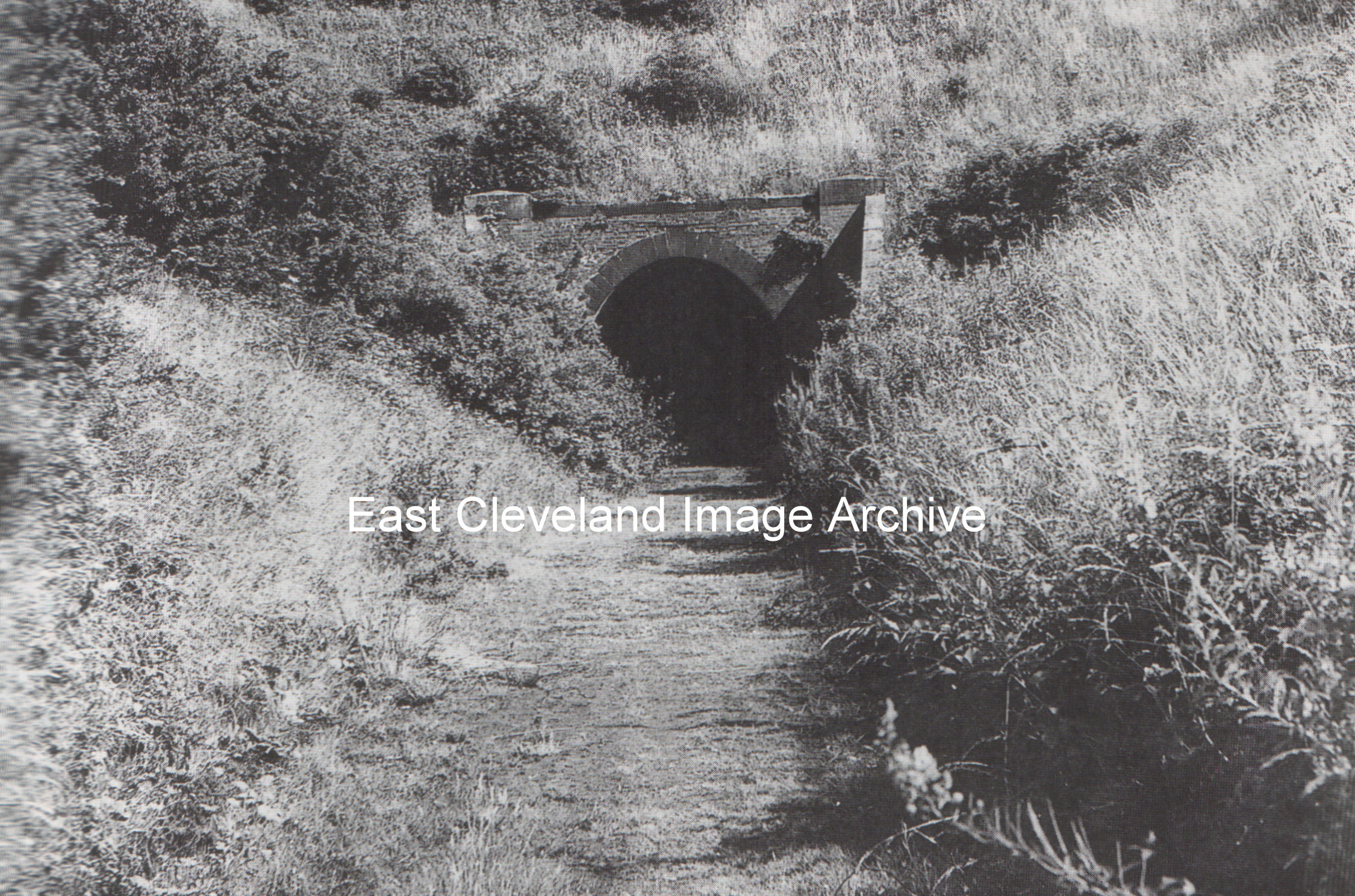 About a mile long this tunnel (which carries the line through the ridge along which Grinkle Lane travels) I was told; and yes we used to go and play in it when the trains were running and scare ourselves silly. Dave tells us: “Actually the tunnel is some 993 yards long.” Ann Jackson tells the Archive: “My Great Grandad James Jackson worked on the Easington a Tunnel. He worked for the Midland Railway Co. As a stone mason. He moved to Easington from the Dales where he worked on the Ribblehead Viaduct also for the same company.” Whilst Christopher Colbeck advises: “I came to live in Loftus in 1958. Along with mates from the Loftus Rec [Micklow Lane] we had on several occasions walked/stumbled through the tunnel to the far end which gave us access to Twizziegill where in previous times the had been mine workings. There were old brick buildings [I think they were stables]. What made the tunnel a bit daunting was not the length but the fact that tunnel had a curve which meant that there was no ‘light at the end of the tunnel’ to be seen until we had walked a considerable distance. At that time the rails and sleepers were all in place. There were recesses let in the sides of the tunnel which we could step into; which I presumed provided a safe space for workmen when trains were running regularly. There was two vertical air/light shafts in the roof but years of steam trains had reduced the walls to a matt black surface which gave no reflected light and rendered a torch fairly useless.” Thanks to Dave, Ann Jackson and Christopher Colbeck for the updates. |
||
Recent Comments